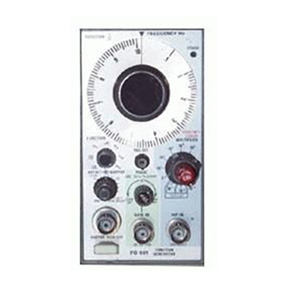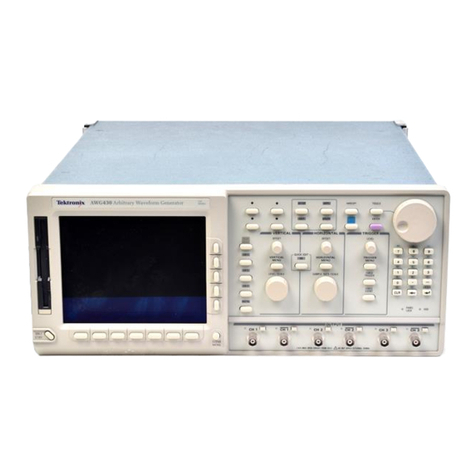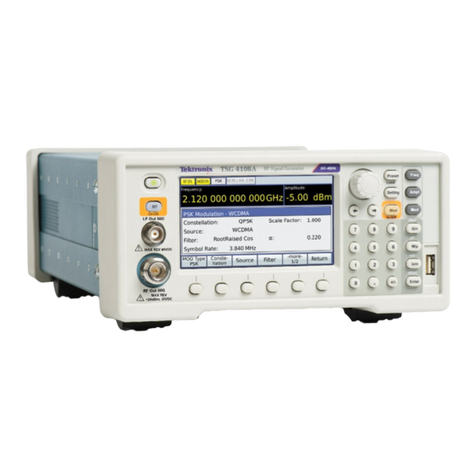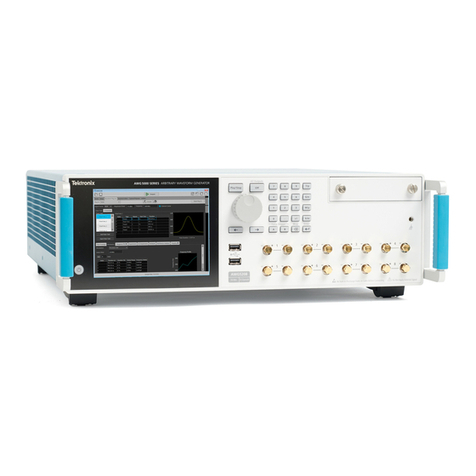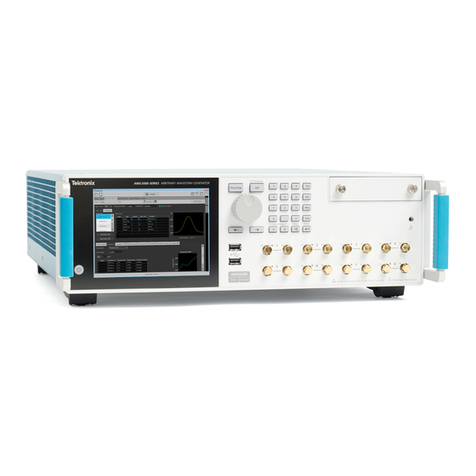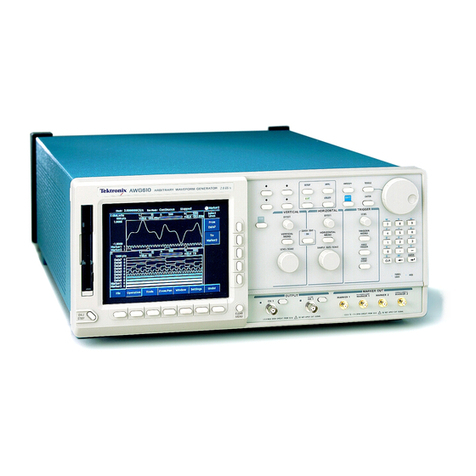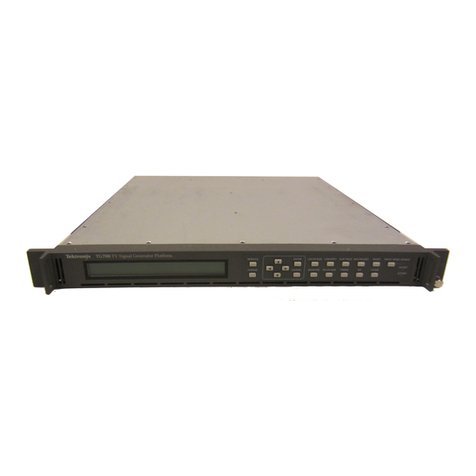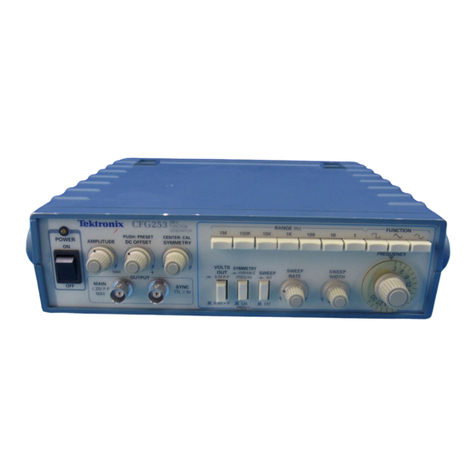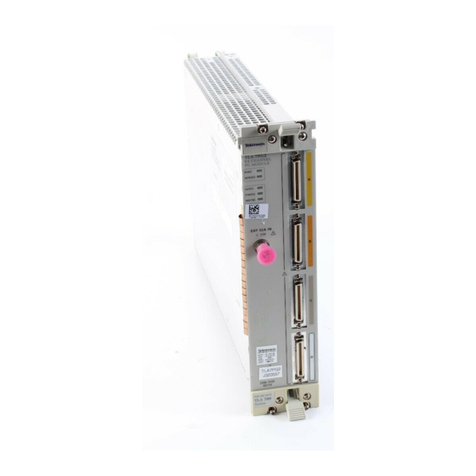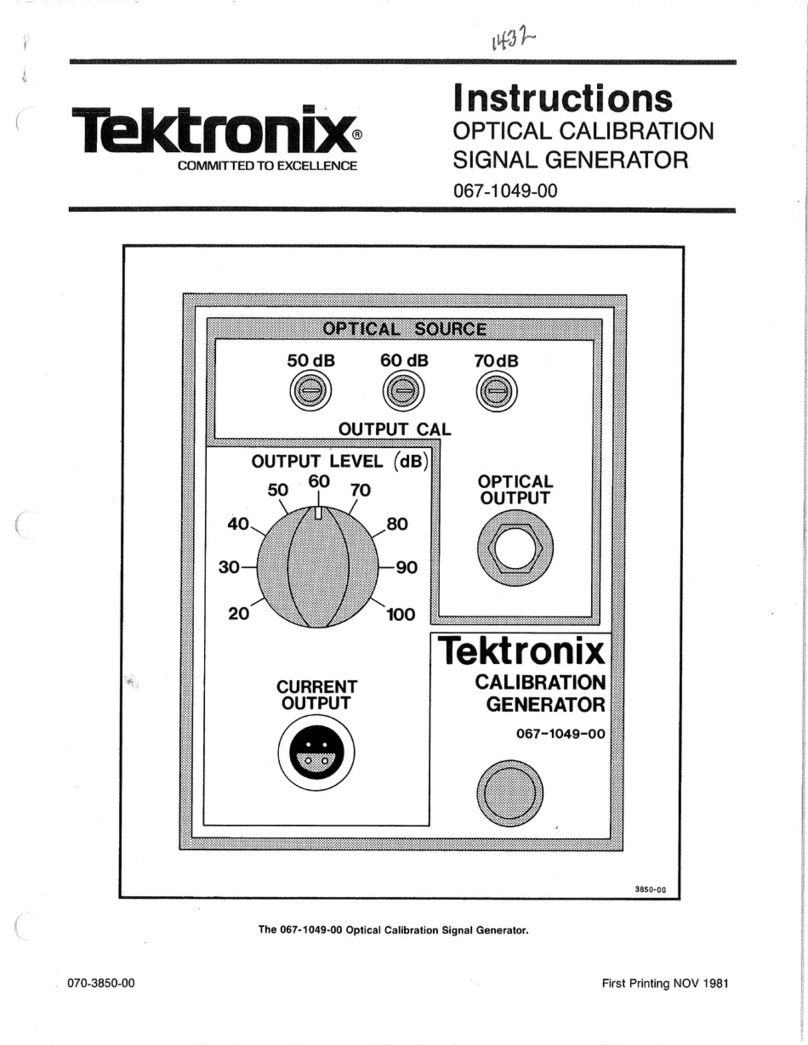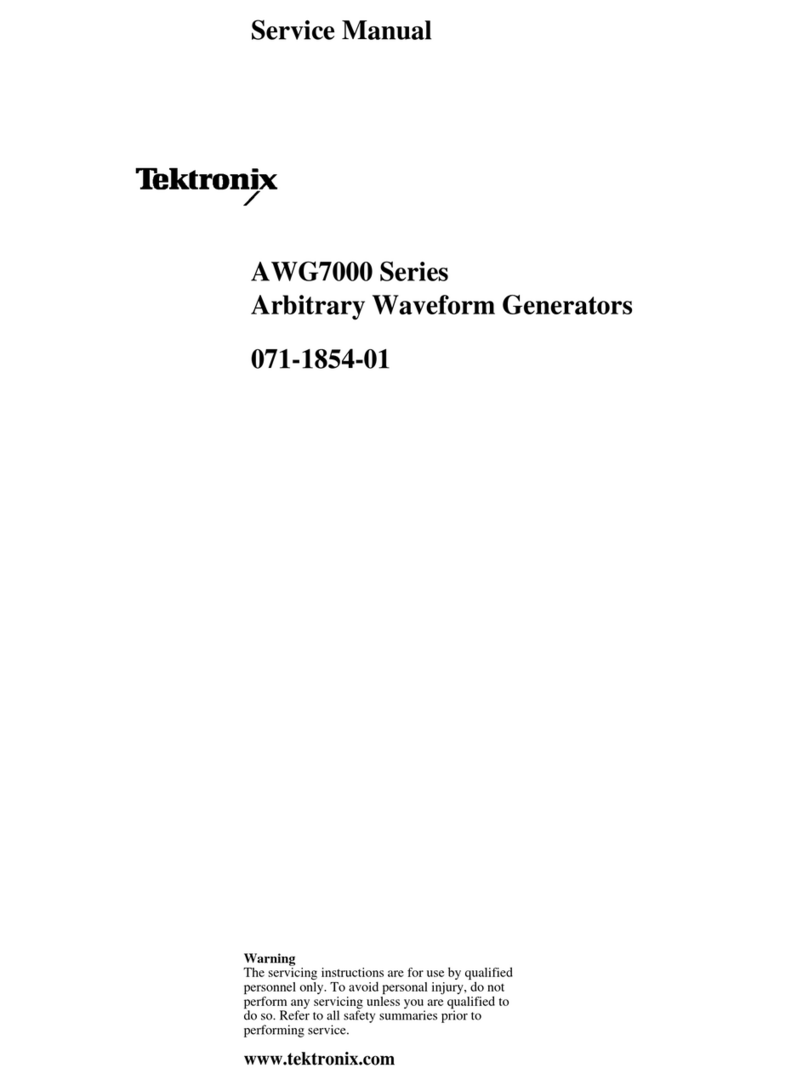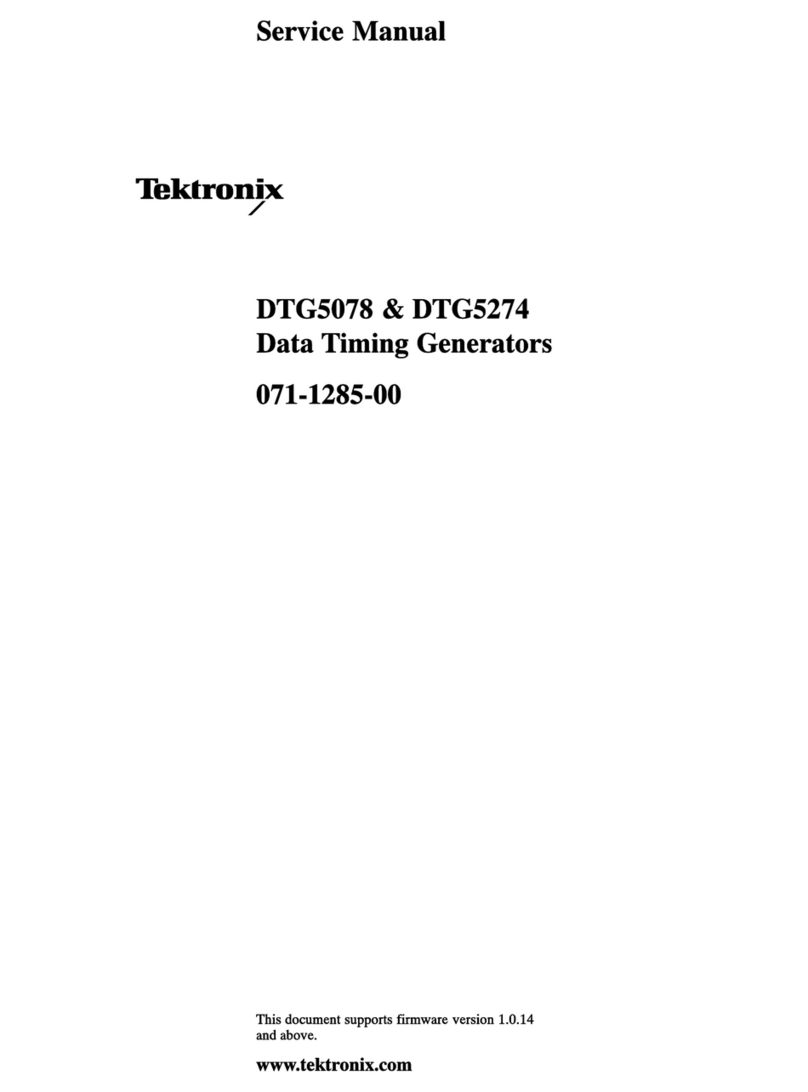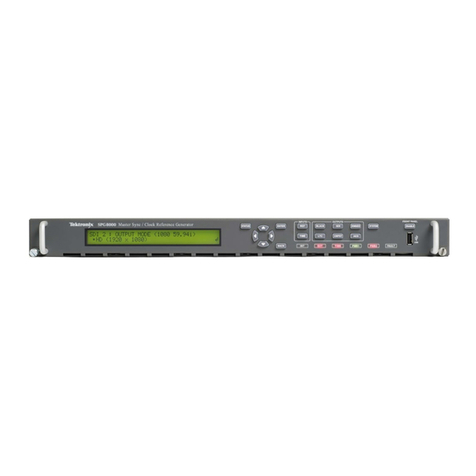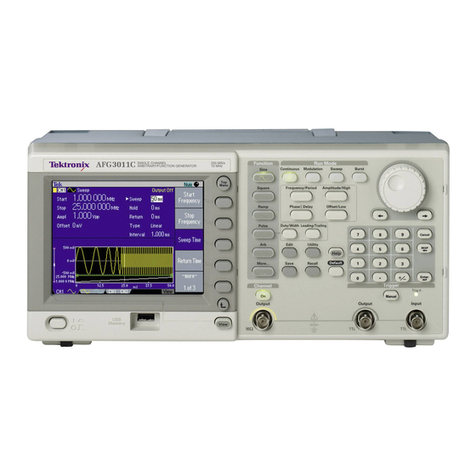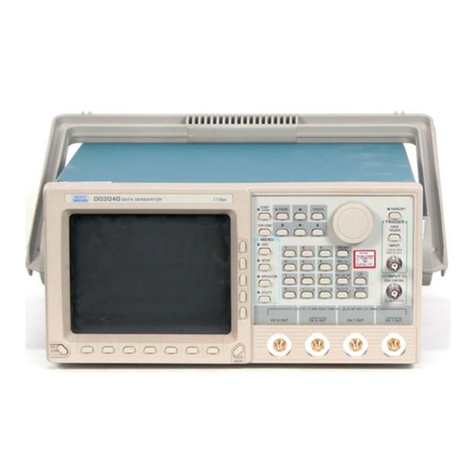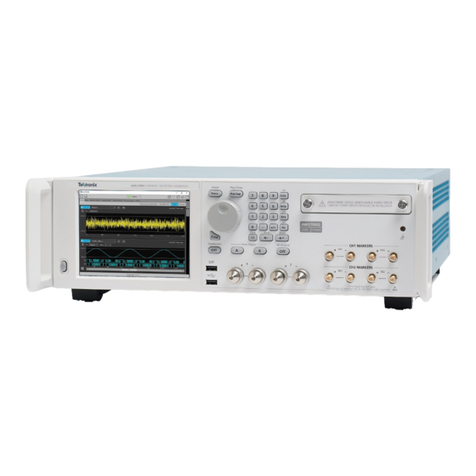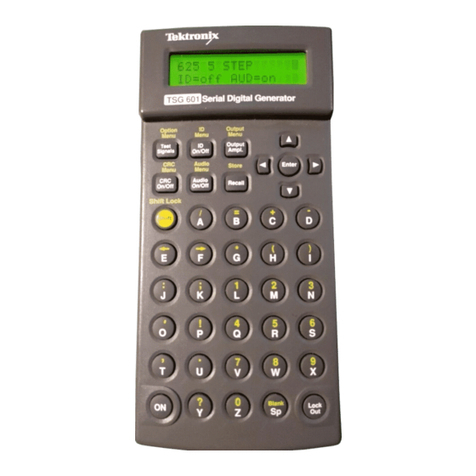
Circuit Description — Type 1 80A
The oscillator signal connected to the Isolating CF drives
the 5-jUsec Divider. In this circuit, one output pulse is
produced for every five input pulses. Since the input signal
consists of 1-microsecond pulses, one output pulse will
occur every 5 microseconds. The 5-p.sec markers are coupled
to the pushbutton switches and banana jacks for external
use, and are also connected to the input of the 10-micro
second divider. The 10-,u,sec divider produces one output
pulse for every two input pulses. Hence with 5-/xsec markers
at the input, the output markers will be spaced 10-micro-
seconds apart.
All of the other dividers are similar to the 5-fisec or 10-
/j.sec divider. They produce one output pulse for every
five or every two input pulses. In this manner, the original
1-microsecond time-marker signal is accurately "counted
down” to as low as 5 seconds.
The output signals from all of the dividers are connected
to an associated banana jack and pushbutton. The push
buttons are mechanically linked so that any number may
be depressed at one time. A cancel button (not shown in
Fig. 3-1) is provided to mechanically release all of the
depressed buttons.
The signals at the 10-/isec, 100-/tsec, 1-msec, 10-msec,
100-msec, and 1-sec banana jacks are also connected to
the TRIGGER RATE pushbuttons. Here, any one of the
signals may be selected for connection to the TRIGGER
OUT connector. The signals are coupled to the coaxial
connector through two cathode-followers.
OSCILLATOR AND AMPLIFIER
Oscillator
Circuit details for the oscillator appear on the OSCIL
LATOR AND MULTIPLIER schematic diagram. The oscillator,
V100B, operates as a conventional electron-coupled, crystal-
controlled oscillator. The crystal is contained in a tempera
ture-controlled oven. A front-panel lamp, B101, is connected
in parallel with the heating element to indicate operation
of the thermostat. A variable capacitor, C l 05, is connected
in parallel with the crystal to permit slight adjustments of
the crystal resonant frequency.
The output waveform at the plate of V100B is capaci-
tively coupled to the grid of the l-/j.sec Amplifier, V104B,
and direct coupled to the Isolating Cathode Follower,
V100A. The rc network, RI 03 -003 , increases the risetime of
the pulse at the grid of V104A (in comparison to the pulse
at the grid of V100A) to insure the coincidence of the 1-
and 5-^.sec markers.
l-/xsec Amplifier
The l-/j,sec Amplifier is a conventional voltage amplifier
with high-frequency peaking in the plate circuit. The gain of
the stage is about 2.5. The inductor, LI 07, serves to improve
the risetime of the output waveform.
l-/isec Output CF
The 1-jU.sec Output CF, V104A, is biased below cutoff
through divider R114-R115. This insures that only the fast
rising positive pulses reach the output. The network consisting
of Cl 16 and R116 differentiates the rectangular pulses
from the plate of V104B, causing sharp, positive-going
pulses to appear at the grid of V104A. These pulses
appear at the cathode of V104A as 1-^isec time markers.
From here, they are coupled to the output switching cir
cuits and to the 5-mc Multiplier.
SINE-WAVE MULTIPLIERS
5-Mc Multiplier
The 5-mc Multiplier, V124, is a conventional grid-leak
biased, Class-C amplifier, plate-tuned to 5 megacycles. The
exciting l-/xsec (1-megacycle) pulses cause the plate tank
circuit to resonate at 5 megacycles. The 5-mc sine-wave is
link-coupled from the output tank circuit and fed to the
output switch. Plate voltage for the stage is also controlled
by the output switch. The switching arrangement is such
that V I24 will operate only when the 5-, 10- or 50-mc
pushbutton is actuated.
10-MC Multiplier
V I34 acts as a frequency doubler. The primary and
secondary of the rf transformer in the plate circuit of
V I34 are both tuned to 10 me. The 10-mc output signal is
link-coupled to the output switch, and plate voltage for
the stage is also coupled through the output switch. The
switching arrangement is such that the stage operates only
when the 10- or 50-mc pushbutton is selected.
50-MC Multiplier
The 50-Mc Multiplier, V I44, operates as a frequency
quintupler. The primary and secondary of the transformer in
its plate circuit are tuned to 50 me. The plate voltage of
this stage is turned on only when the 50-mc pushbutton is
depressed.
TIME-MARKER DIVIDERS
Basic Multivibrator
There are 13 frequency dividers in the Type 180A, pro
ducing thirteen of the fourteen output time markers. (The
fourteenth time marker is the original time marker derived
from the one-megacycle oscillator output.) The operation
of all thirteen dividers is essentially the same. In general, a
divider consists of a bistable multivibrator, with diode
coupling for triggering pulses, and two cathode-follower out
put stages. The operation of the 5-,asec multivibrator is
described below. The circuit notation of Figure 3-2 is used
for simplification.
In the quiescent state, V2 is held in conduction by the
grid-clamping action of V4 and VI is blocked out of
conduction by the fixed grid bias. The plates of VI and V3
rest at about +225 volts. The cathode of V3 is normally
at about +225 volts in the absence of a triggering pulse.
The multivibrator is triggered into its unstable state by
a negative-going 50-volt pulse at the cathode of V3. The
pulse drives the cathode more negative than the plate, per-
3-2
